| Dylan Hawthorn |
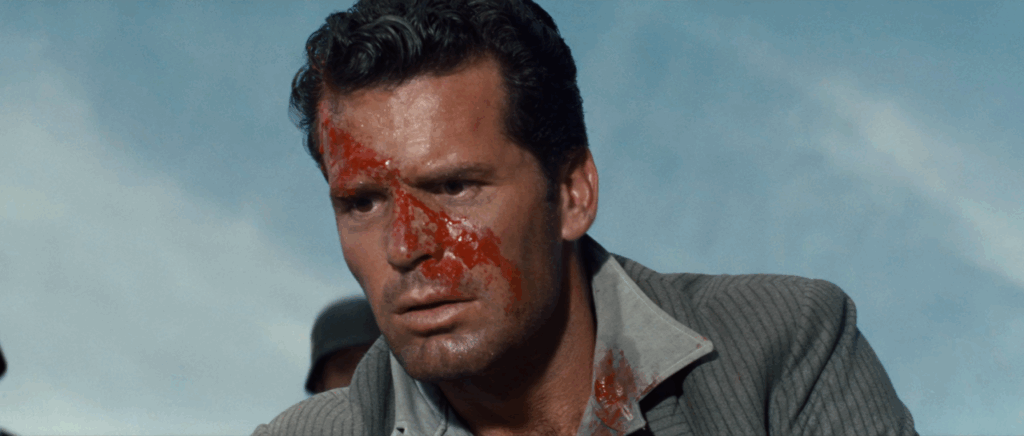
The Great Escape plays at the Trylon Cinema from Sunday, August 31st, through Tuesday, September 2nd. For tickets, showtimes, and other series information, visit trylon.org.
The concept of melodrama has a bad reputation. If I described my sister’s behavior during a conflict as melodramatic, I am suggesting that her reaction is over-the-top and should be dismissed. Furthermore, there’s a reason my brain jumped to citing a fictional sister for this example as opposed to a brother. Patriarchy tells us that women are naturally more hysterical and prone to emotional reasoning compared to men, the grounded and action-oriented decision makers. Thanks to this messaging and resulting bias, anything that appeals to women or features heightened emotion (the two don’t need to go together) are considered more melodramatic than things marketed to men.
Due to their strong focus on women and heightened emotions, 1950s-60s Hollywood Family Dramas are considered peak examples of melodrama. Their protagonists are hero-victims facing acts of God like sudden illnesses and deaths. Their garish colors, sweeping scores, and obvious symbolism heighten their unreality.1 All these elements work to generate pathos (or pity) and engage audiences in identification and empathy.
However, the concept of melodrama and conventions of the form apply to so much more than these “weepies.” Due to the connotations of the word, it might raise eyebrows to label films like The Great Escape (John Sturges) as melodrama. Despite these misconceptions, The Great Escape is a classic example of an American melodrama. In fact, the melodramatic aspects of The Great Escape are inherent to the film’s success instead of a fault to downplay.
The Melodramatic Mode
Our current conception of melodrama comes to us by way of France, where melodramatic plays entertained audiences in the late 1700s and early 1800s. They featured characters with black and white morals caught up in heartwrenching, suspenseful plots.2 These storytelling devices effortlessly made the jump to silent movies, which also required a straightforward visual index to convey nuance,3 and carried through in the aforementioned Family Dramas by directors like Douglas Sirk and Vincente Minnelli.
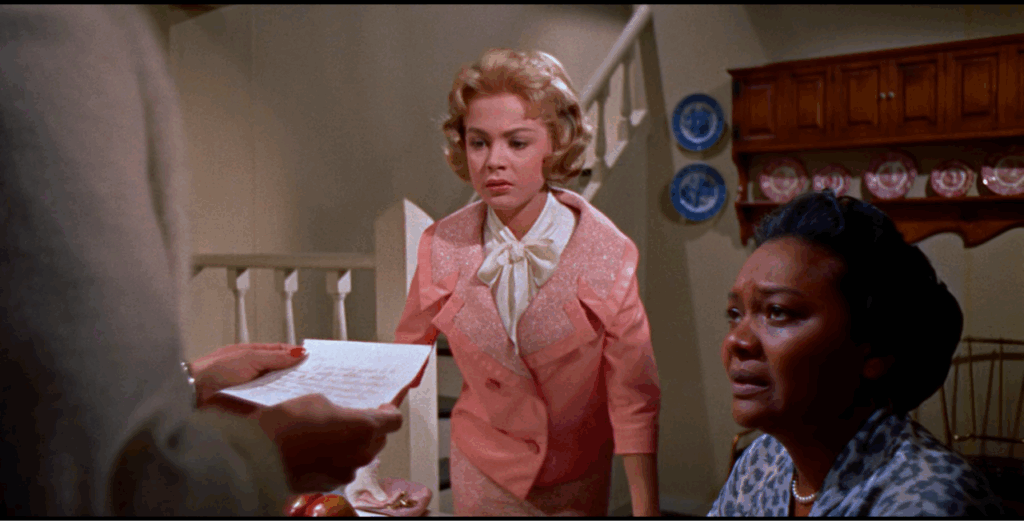
A scene from Imitation of Life (Douglas Sirk)
Especially in our current American culture allergic to sincerity, hyperaware of “cringe,” and drawn to complicated antiheroes, these “weepie” elements tend to earn unintentional laughter and are therefore “bad.” This means the Family Drama is diametrically opposed to “good” films that prize directorial restraint and more natural stories.
… Right?
Melodrama in Hollywood
Many contemporary scholars argue that this division is not as clear-cut as it would seem. The original classification of Family Drama as the exemplar of melodrama defines popular conception of the form to this day, largely due to the 1980s film theorists who decided this to be the case.
Scholar Linda Williams writes that classical Hollywood cinema may claim to prize a certain kind of realism, but melodrama is still a fundamental mode regardless of genre or protagonists’ genders. She describes it as a “peculiarly democratic and American form that seeks dramatic revelation of moral and emotional truths through a dialectic of pathos and action.”4
I’m inclined to agree. Say what you will about the United States, but you cannot deny we love a good underdog story. From the tales we’re told about our formation as a paragon of freedom against a violent empire to present-day narratives, the doctrine of American exceptionalism reigns supreme. It casts clear “good guys” and “bad guys” in our history classes, news reports, and assumptions about who We the People are.
Williams proposed the following framework for American melodramatic film in her essay “Melodrama Revised:”
- Begins and wants to end in a space of innocence: Protagonists seek to return to a familiar “before.” Crucially, they do not want to find a “new normal,” they want to go back to what they have lost.
- Focuses on victim-heroes and recognition of their virtue: Protagonists are considered virtuous by the existence of their suffering and/or the heroic actions they take to mitigate said suffering. Often women are cast as steadfastly enduring suffering, and men are responsible for taking action against it.
- Realism effects through cinematic affects: Realistic stories and stylings situate an audience in a familiar setting, activating our emotional and moral responses through identification. Systemic problems and conflicts can be boiled down to interpersonal issues.
- Dialectic of pathos and action: The narrative swings between protagonists escaping suffering “in the nick of time” and interventions that are “too late” to save them. Thus the narrative generates pity and excitement, respectively, and tension increases for the viewers.
- Characters embody good or evil: Personality is the key to moral truth; the way to understand a character is how they speak instead of what they say. Characters are Manichean (wholly good or wholly evil). Individuals represent historical complexities, and victimization is a way to signify virtue.5
I like this framework because it succinctly synthesizes previous scholarship trends and speaks to the ways melodrama shows up outside of any specific genre.
About The Great Escape
This brings me to The Great Escape. Released in 1963, the film features an all-star cast of tough guys playing prisoners of war in the German POW camp Stalag Luft III. The individual characters are fictional, but realism suffuses the plot. It is based on a true story of 76 Allied air force personnel escaping the camp in 1944 (most of whom were recaptured and many of whom were executed).
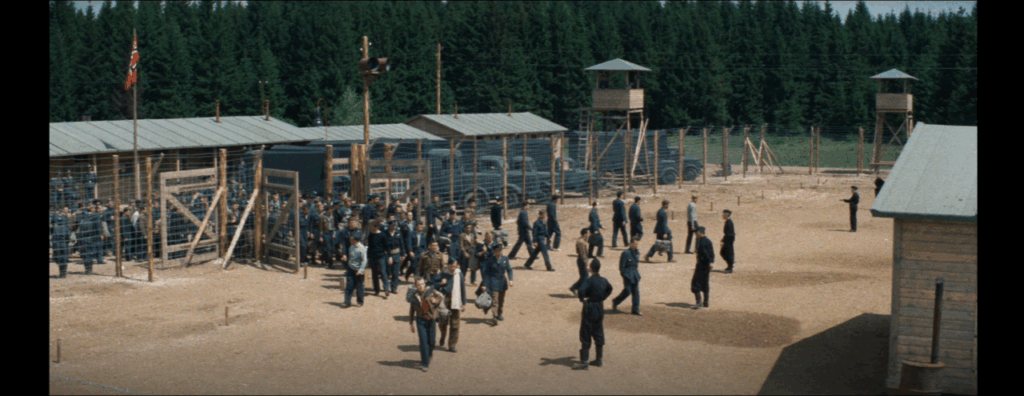
The Great Escape is Manichean by nature. In a post-WWII landscape, Nazis are an easy symbol for evil. Any character fighting against them is morally sound in comparison. The film showcases these morals in its mise-en-scène. Uniforms and languages or accents signify who is good and who is bad. Each character embodies morality or wickedness.
The protagonists’ goal is to end in a space of innocence. The German officers tout that prisoners can enjoy leisurely pursuits, but they still risk death and harsh punishments. Every day brings the agony of being contained behind enemy lines. These all lead to mental health deterioration and loss of pride—or, suffering that the escapees seek to flee in order to go back home.
The Great Escape was also made during threats of nuclear war, the collapse of European colonial empires, and the space race. Perhaps the protagonists are not the only ones longing for a space of innocence. Melodramatic simplifications of good versus evil (us versus Nazis) are salves to post-war upheaval.
This movie has a lot going on—over a three-hour runtime, it follows sixteen protagonists through the construction of their escape route and the aftermath of the escape. We are encouraged to root for the group and don’t get to know the men very well individually. However, they do embody melodramatic archetypes.
Let’s analyze the fates of a few prisoners and apply Williams’s points in further depth.
The Motorcycle Stunt
Steve McQueen plays Captain Hilts, a caricature of an arrogant American. After the escape, he steals a German officer’s uniform and motorcycle. In an attempt to cross the Swiss border while looking as cool as possible, he jumps a barbed wire fence. A second attempt ends with him tangled in the fence and recaptured.
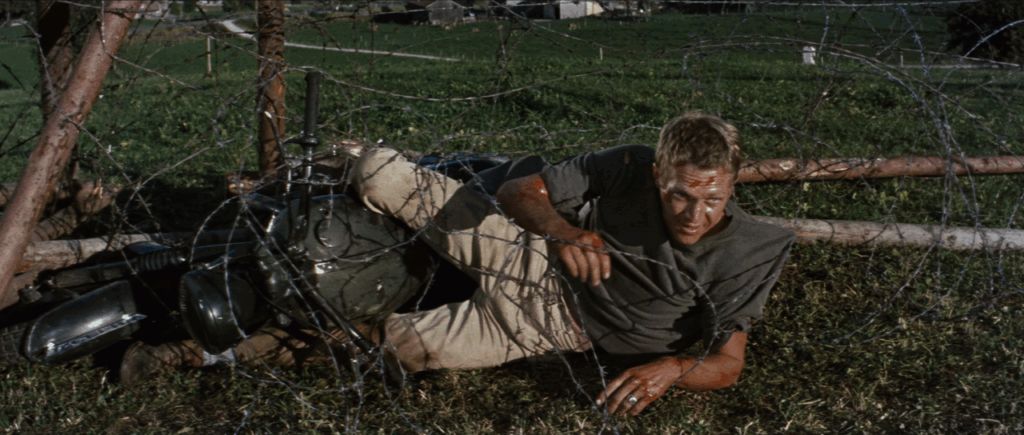
This scene is the most exciting action in the film, and it is conveyed as such through editing. Hilts’s ride up to the fence is split with shots of other prisoners making their escape attempts. This editing turns a minute in real life into an epic odyssey and is emblematic of the dialogue between pathos and action. The audience is impressed with the steps our hero takes to end his suffering and grits their teeth in hopes that he can get away before the small army of soldiers chasing him catches up. When he ultimately fails, our cheers for his brave deed morph into pathos and regret.
This defeat is the culmination of a moral arc taking Hilts from immoral selfishness to righteous selflessness. In the camp, he makes numerous escape attempts in order to rectify his suffering, resulting in multiple months in solitary confinement (and further suffering). These actions are the epitome of masculine action and American go-get-em attitude, but they do not consider other prisoners and ultimately hurt the collective cause.
Once a friend is killed trying to climb the fence, Hilts is forced to recognize the suffering of his fellow prisoners and realize he is not alone in his pain. He then makes several sacrifices to demonstrate his new virtue, such as being intentionally recaptured in order to share information with escape organizers. These sacrifices culminate in his pathos-generating motorcycle jump and cement his status as victim-hero.
Blythe’s Death
Donald Pleasance’s Lieutenant Blythe and James Garner’s Lieutenant Hendley are an odd couple. When they learn they are roommates, they are wary of each other. Blythe is a quiet forger who loves tea and birding, and Hendley is a slick scrounger who actively seeks danger. Eventually, they become friends.
Blythe is struck with blindness halfway through the film. His sudden realization that he can no longer see arises from nowhere and hearkens back to acts of god characteristic of “typical” melodramas. Hendley then steps up and physically guides Blythe through the escape.
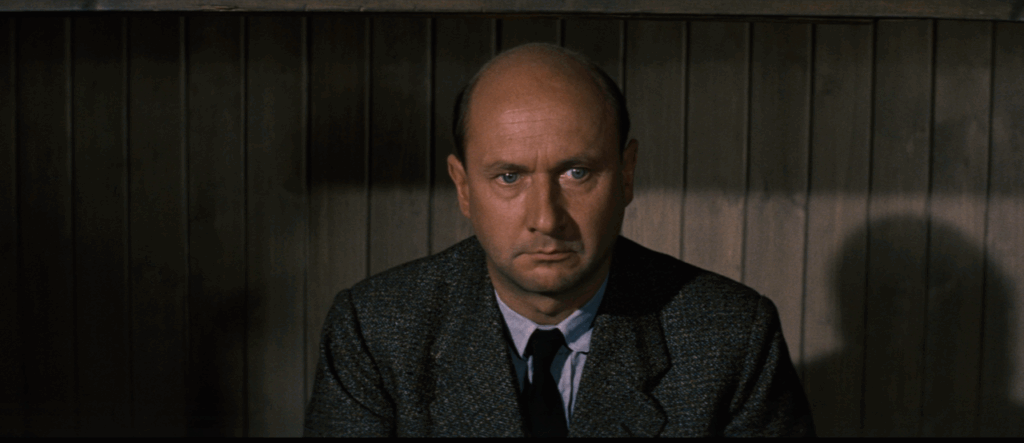
Unfortunately, the plane Hendley steals to fly them out of Germany crashes. While Hendley is distracted fixing it, Blythe is shot by German troops he is unable to see. He dies in Hendley’s arms, Hendley apologetic and Blythe happy just to have escaped (for however brief a time).
The Blythe-Hendley duo is the epitome of the victim-hero character. Both are heroes by virtue of contributing to the escape, but Blythe becomes a helpless victim (and feminine archetype) tasked with enduring his suffering. He must rely on Hendley to transform his suffering into action. When Hendley is unable to do so thanks to another act of god, the audience is led to pathos by the moving (and melodramatic) death scene.
Melodrama Is Good, Actually
At the end of the movie, most of the surviving officers (including Hilts and Hendley) are returned to Stalag Luft III. The de facto leader of the POWs informs them that most of the escapees were killed, and Hendley asks if it was worth the price. The officer replies, “Depends on your point of view, Hendley.” Then the music plays and everyone resumes their activity as if nothing had happened. Hilts is escorted back to solitary, and in the final shot of the film he throws his baseball at the wall, ready to endure his suffering—this time as a hero rather than a hothead.
The melodramatic elements of The Great Escape enable us to similarly ask and attempt to answer Hendley’s question. They give the film its heart. Without them, the movie becomes a dry account of a bunch of men digging a tunnel. Instead, the cinematic affects Sturges employs provide an easy emotional shorthand to understand the large cast of characters. The engineered pathos enables us to connect with them in a deeper way and understand their relationships to each other. No woman has a speaking part in this film. The Great Escape shows that melodrama is for men too.
Slapping the “melodrama” label on a film implies that it’s saccharine or artificially sentimental. To many, this therefore renders them inferior. However, melodramatic elements are not necessarily bad and realism is not the epitome of quality. To say otherwise is a reflection of patriarchy’s influence on our media habits.
Melodrama is a crucial reason The Great Escape has endured as a classic for the last fifty years. So the next time you feel like laughing at an unrealistic plot device or obvious display of emotion in a movie, please consider why you feel that way. Allow yourself to grab a box of tissues and let the tears flow—it could be a strength of the movie, and it’s proof that you have a soul.
Footnotes
1 Mercer, John, and Martin Shingler, Melodrama: Genre, Style, Sensibility (Short Cuts). (New York: Wallflower Press, 2005), “2. Style,” ePUB.
2 Allen, Richard, “Toward a Philosophy of Melodrama.” Projections: The Journal for Movies and Mind Winter 2023, Vol. 17 Issue 3: 2, doi:10.3167/proj.2023.170301
3 Mercer and Shingler, Melodrama: Genre, “1. Genre,” ePUB
4 Linda Williams, “Melodrama revised,” in Refiguring American film genres: history and theory, ed. Nick Browne. Berkeley: University of California Press, 1998, https://www.fulcrum.org/concern/monographs/br86b409j, p. 42
5 Williams, “Melodrama Revised,” p. 65-80.
Edited by Olga Tchepikova-Treon
